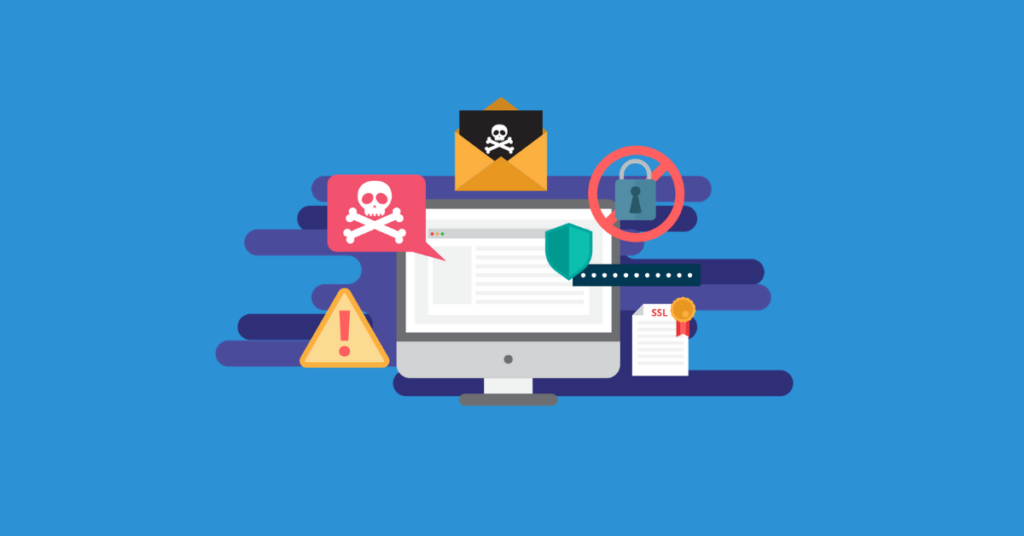
The number of recent data breach incidents has shattered much of security protocol claims of user data and information protection in the digital world. It is an understood fact that when it comes to data protection, there is no silver bullet. However, there are certain things that IT security administrators in organizations and private users can do to protect their data and privacy better.
Here is a checklist of data protection and privacy breach prevention measures using data protection software to keep your data secure from data breach and hack attacks:
1. Implement data protection software across networks. There are big names in the enterprise networking world. For organizations that lack the necessary budget or expertise to maintain a large-scale security web across networks, the use of data protection software can improve network security by blocking most data threats.
2. Shred files according to benchmarked data remanent removal standards. Do not merely delete items your PCs. Worse, do not just share your storage devices with anyone without properly removing your items from them. Make sure that the items on your PCs that include sensitive information or personally identifiable data are thoroughly shredded before disposal. The best shredding software incorporates shredding protocols based on the U.S Department of Defense data removal standards.
3. Monitor your items prior to periodic events. Examples of documents that you should keep under constant monitoring, especially prior to a specific event that needs submissions of your data and information to the authorities, include your corporate Tax records, social security filings, new employee credit reports.
4. Encrypt your most sensitive items on your PCs. Data breach incidents involving identity theft resulting from public databases are too often a fact. Publishing lots of information about corporate affairs, news, and updates, social networking, employer branding, and social responsibility initiatives all contribute to w well structured PR campaign for any company, big or small. But the inherent risks involved in all of this is the ease of retrieving important corporate representative details that identity thieves can use to either manipulate or seriously harm a company’s image and standing in the community.
5. Financial fraud due to failure to protect or monitor. Failure to keep your financial documents secure by implementing data protection software can seriously harm your business potential. It is vital to ensure that proper monitoring and checks are in place that can protect and secure your company’s financial information at all times.
6. Poor emailing standards. Businesses and people that rely on emails as a sole communication tool should rethink about how secure their communication is. As thousands of business owners and individual users alike use emails to communicate sensitive and confidential information, the stark reality is that each email sent by and person is available to a number of people, in addition to the original recipient. Chances of emails getting intercepted and interpreted during transit are high.
7. Secure passwords. Start using secure passwords TODAY! Please!! Better yet, shift to passphrases, that combine at least three unique random words, but something that you can easily remember. This is the best thing since passwords, and relatively far more secure than passwords. An example passphrase may look like this: “Tulsa and the Saturday cosmic turn”.
Keep this checklist in view whenever you think you may need it. Feel free to add to it and share with everyone. Because, one thing is certain – data breach incidents are getting more and more expensive and harmful. Using common sense and fundamentals in data protection, you can prevent the vast majority of data and privacy breach incidents.
What Is A Security Checklist?

A security checklist is a list of steps and procedures to follow when assessing the security of a system or network. It is used to ensure that all necessary security measures are in place to protect the system or network from malicious activity. Security checklists typically include items such as ensuring that all software is up to date, checking for any known vulnerabilities, and verifying that all passwords are strong and secure.
Example Of Security Checklist
1. Ensure that all software is up to date
2. Check for any known vulnerabilities
3. Verify that all passwords are strong and secure
4. Implement a firewall
5. Use encryption for sensitive data
6. Monitor system logs for suspicious activity
7. Implement a patch management system
8. Perform regular security scans
9. Enable two-factor authentication
10. Set up user access controls and permissions.
What Is A Basic Checklist?
1. Establish a timeline and budget
2. Research the necessary materials or services
3. Make a list of tasks and assign them to team members
4. Set up a system for tracking progress
5. Identify any risks and develop a plan to address them
6. Create a system for communication
7. Develop a plan for quality assurance
8. Document the process and results
9. Follow up with stakeholders to review progress and results
10. Celebrate success
Ways To Protect Personal Data
1. Use strong passwords and two-factor authentication.
2. Encrypt data and store it securely.
3. Regularly update security measures.
4. Educate yourself and your employees on data security.
5. Monitor user activity and access logs.
6. Implement access control measures.
7. Regularly back up data.
8. Dispose of data securely.
How Do I Make A Compliance Checklist?
1. Identify the applicable laws and regulations that apply to your business.
2. Establish a process for monitoring compliance.
3. Create a compliance checklist that outlines specific tasks and activities.
4. Develop a system for tracking compliance activities.
5. Ensure that all employees are aware of the compliance requirements.
6. Implement a system for reporting violations and non-compliance.
7. Develop a policy for addressing violations and non-compliance.
8. Monitor and review
7 Elements Of Compliance
1. Policies and Procedures: Establishing clear policies and procedures that define the standards of compliance.
2. Training and Education: Ensuring that all employees are properly trained and educated on the applicable laws and regulations.
3. Monitoring and Auditing: Monitoring and auditing the compliance activities to ensure that they are being properly implemented.
4. Reporting and Investigation: Establishing a system for reporting violations and non-compliance and conducting investigations when necessary.
5. Enforcement: Establishing disciplinary actions for violations and non-compliance.
6. Risk Management: Identifying, assessing, and managing potential risks of non-compliance.
7. Communication: Establishing a communication system to ensure that all stakeholders are aware of the compliance policies and procedures.
Types Of Checklist
1. Pre-Implementation Checklist: This checklist is used to ensure that all the necessary steps are taken before the implementation of the compliance program.
2. Compliance Monitoring Checklist: This checklist is used to ensure that all the compliance policies and procedures are being followed.
3. Risk Assessment Checklist: This checklist is used to identify potential risks of non-compliance and evaluate the effectiveness of the compliance program.
4. Internal Audit Checklist: This checklist is used to ensure that the compliance program is being implemented effectively and that any identified gaps are addressed.
5. Training and Education Checklist: This checklist is used to ensure that all employees are properly trained and educated on the compliance program.
6. Documentation and Record Keeping Checklist: This checklist is used to ensure that all compliance-related documents and records are properly maintained and updated.
7. Third-Party Compliance Checklist: This checklist is used to ensure that third-party vendors and service providers are compliant with the company’s compliance program.
8. Auditing and Monitoring Checklist: This checklist is used to ensure that the compliance program is regularly audited and monitored for effectiveness.
9. Reporting and Disclosures Checklist: This checklist is used to ensure that all compliance-related reports and disclosures are made in a timely and accurate manner.
10. Corrective Action Checklist: This checklist is used to ensure that any identified compliance issues are addressed in a timely and effective manner.
Checklist In Data Collection
A checklist in data collection is a list of items that need to be checked or verified before data is collected. It is used to ensure that the data collection process is accurate and complete. Checklists can include questions that need to be asked, items that need to be measured, and other tasks that need to be completed. Checklists help to ensure that data is collected in a consistent and accurate manner.
What Is A Good Checklist?
A good checklist should include all of the necessary tasks that need to be completed for data collection. It should also be organized and easy to follow. The checklist should be tailored to the specific data collection process and should include steps for verifying accuracy and completeness. Additionally, the checklist should provide clear instructions for each step of the data collection process.
Workplace Safety Checklist
A workplace safety checklist is a list of safety measures that need to be taken in order to ensure a safe working environment. This checklist should include items such as wearing personal protective equipment (PPE), keeping work areas clean and free of clutter, and maintaining proper lighting. It should also include emergency procedures, such as how to evacuate in the event of an emergency, as well as safety protocols for handling hazardous materials.
What Is Checklist Method?
The Checklist Method is a system of documenting and verifying that all steps of a process have been completed. It is a way of ensuring that all tasks and procedures related to a specific job or project have been completed in an orderly and systematic way. The checklist is used to ensure that all necessary steps have been taken and that nothing has been overlooked or forgotten. The checklist is also useful for tracking progress and identifying areas where improvement is needed.
How Do You Write A Checklist Example?
1. Start by writing down the task or project that needs to be completed.
2. Break the task or project into smaller, more manageable tasks.
3. For each task, list the necessary steps or requirements.
4. Assign a timeline for each task.
5. Identify any resources that may be needed to complete the task.
6. Check off each step as it is completed.
7. Review the checklist to ensure all tasks have been completed.
What Is A Checklist Process?
A checklist process is a systematic approach to completing a task or project that involves breaking it down into smaller, more manageable tasks and then tracking progress by checking off each task as it is completed. The process also involves assigning timelines, identifying resources, and reviewing the checklist to ensure all tasks have been completed.
Best Practices For Protecting Private Data
Best practices for protecting private data include:
1. Encrypting data at rest and in transit.
2. Establishing access control policies and procedures.
3. Implementing two-factor authentication.
4. Monitoring user activity and access.
5. Implementing data backup and recovery processes.
6. Regularly testing the security of the system.
7. Keeping software and systems up to date.
8. Educating employees on data security policies.
Three Types Of Data Protection
The three types of data protection are physical, administrative, and technical. Physical data protection includes physical security measures such as locks, alarms, and surveillance. Administrative data protection involves implementing policies and procedures such as access control and user authentication. Technical data protection involves using encryption and other security technologies to protect data.
Five Key Requirements Of Privacy And Data Protection
1. Transparency: Organizations must be transparent about how they collect, use, and protect personal data.
2. Data minimization: Organizations must limit the collection and use of personal data to what is necessary to fulfill the purpose for which it was collected.
3. Data accuracy: Organizations must ensure that the personal data they collect is accurate and up-to-date.
4. Security: Organizations must take appropriate measures to protect the personal data they collect from unauthorized access, use, disclosure or destruction.
5. Access and rectification: Organizations must allow individuals to access their personal data and to rectify any inaccuracies.
6. Accountability: Organizations must be accountable for complying with the principles of data protection.
